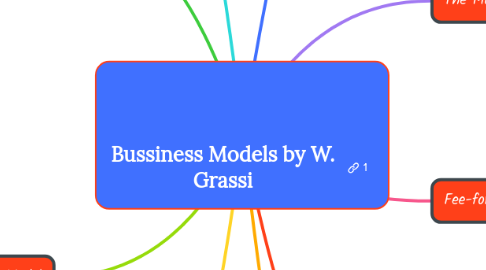Bussiness Models by W. Grassi
作者:Sloka Vineetha Chandra

1. The Low-income Client Model
1.1. SEs in this category generally offer social services directly (as in the fee-for-service model) while focusing on low-income clients.
1.2. Silico Foundation. they provide solar energy at a nominal fee
1.3. Mitti cool organisation works with street venders to prvide them with cold storage service at low rates
2. The Cooperative Model
2.1. This is one of the most widely recognized categories of SE. The cooperative is generally a fee-based membership organization that provides member services to a group that shares a common need or goal.
2.2. The cooperative is owned and operated by its members, who both run the cooperative and receive the benefits of its success. Two of the most well-known types of cooperative include credit unions and employee-owned businesses
2.3. Amul and Geetanjili
3. The Market Linkage Model
3.1. SEs that serve as brokers for their clients often adopt this model. These SEs focus on building relationships and otherwise connecting their clients with markets for their clients’ products and services.
3.2. In other words they provide a platform for seller and buyer. they just faciliate the interaction.
3.3. Flipkart, Amazon
4. The Service Subsidization Model
4.1. SE sells it products to an external market and uses the revenue gained to subsidse its service for its benificary.
4.2. it aims to bring it services to those who can afford and those who cannot affors.
4.3. Arvind eye care. here arvind eye care was started to do cateract opertaion for the lower income strat of society at subsidesed rates but htey also provided their serive to affluent part of society too.
4.4. Naireeta services ka Bhungaroo
5. Support Model
5.1. This model supports its benificaries become valuable human resources.
5.2. Support can come in the form of consulting services, training, microfinancing or technical support.
5.3. The primary source of income is the sale of their service to the beneficiary.
5.4. Example: Mirakle Courier. Employ deaf and mute people only. The beneficiaries get trained after which they get employed in Mahindra & Mahindra, The Aditya Birla Group, Victory Art Foundation, JSW Group, Indian Hotels Company, Godrej & Boyce and Essel Propack.
6. The Market Intermediary Model
6.1. This model acts as a middle man and markets their clients’ products or services for them
6.2. industry craft
7. Fee-for-Service Model
7.1. The fee-for-service model is one of the most commonly adopted SE business models. The SE charges the customer directly for the socially beneficial services it provides.
7.2. it can include subscription model
7.3. bookshare.com
8. Employment Model
8.1. This type of SE provides their clients with job opportunities and job training.
8.2. Revenue generated by those jobs pays for the SEs expenses and flows back into the services provided for those in need.
8.3. Primary source of incme is sale of goods to the open market.
8.4. Rural Shoes
9. The Organizational Support Model
9.1. This type of SE support SE raises funds for a parent non-profit that, in turn, runs the social programs the SE wishes to support.
9.2. Mission Unrelated


